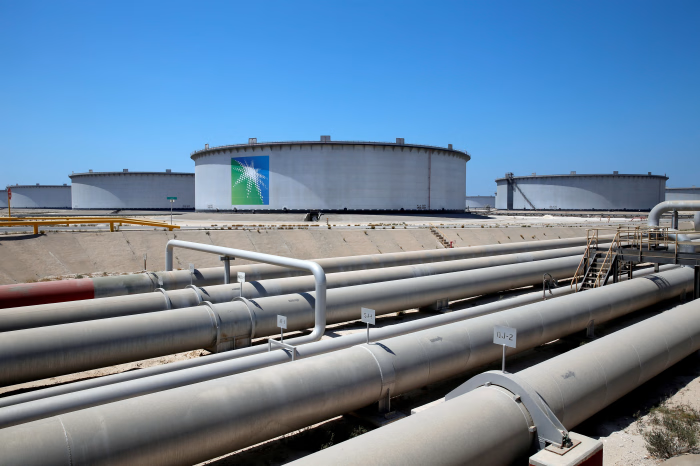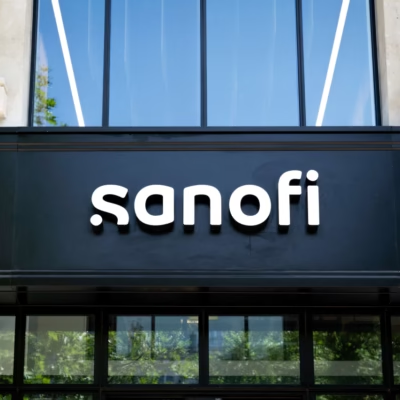In the face of falling oil prices, Saudi Aramco has made a bold move to maintain its dividend, signaling confidence in its long-term financial health and strategy. Even though the energy giant reported a significant drop in profits for the second quarter of 2025, the company stayed true to its promise of delivering strong returns to shareholders.
This decision has drawn global attention as it reflects the broader energy market trends, government policy in Saudi Arabia, and the evolving dynamics of oil demand and supply. Let’s take a deeper look into the financials, market implications, and what this could mean for investors and the global energy landscape.
Saudi Aramco’s Q2 2025 Profit Drops Amid Lower Oil Prices
Saudi Aramco, officially known as Saudi Arabian Oil Company, reported a sharp decline in net income for the second quarter of 2025. The drop is mainly due to falling crude oil prices and lower sales volumes across international markets.
Net profit for Q2 2025 was $29.1 billion, down from $37.6 billion in Q2 2024 — a 22.6% decrease year-on-year. The average Brent crude oil price for the quarter dropped to $71 per barrel, compared to over $85 per barrel in the same period last year. Global demand for oil has slowed due to economic uncertainties, particularly in Asia and Europe, where industrial activity has weakened.
Despite these numbers, Aramco kept its planned dividend payout at $31 billion, including $19.5 billion in base dividend and $11.5 billion in performance-linked dividend.
Why Saudi Aramco Maintains Its Dividend
Maintaining the Saudi Aramco dividend at this level, even when profits are falling, raises key questions. Why would the world’s largest oil company not reduce its shareholder payout?
- Government Dependency on Dividends
The Saudi government owns over 90% of Aramco, and dividends play a vital role in financing its national development plans, including the ambitious Vision 2030 strategy aimed at reducing economic reliance on oil.
Cutting dividends could impact these state-backed projects. Therefore, Aramco’s dividend policy is not just about financial performance but also national priorities.
- Investor Confidence
By sticking to its dividend promise, Aramco reassures both domestic and global investors that it remains financially stable and is capable of delivering consistent returns, even during market downturns. - Strong Cash Flows
Despite lower profits, Aramco still generated robust free cash flow of $32.4 billion in Q2 2025. This indicates the company still has enough liquidity to maintain dividends without overextending itself.
The Global Oil Market Situation

The decline in Aramco’s profit is not an isolated event. It reflects a broader cooling in the oil market globally.
Sluggish demand in China, the world’s biggest oil importer, has reduced overall buying. Ongoing geopolitical tensions in Eastern Europe and the Middle East have created volatility. OPEC+ production cuts continue, but oil prices have not recovered significantly. Green energy initiatives in developed countries are putting long-term pressure on fossil fuel demand.
All these factors combined make 2025 a tough year for oil producers, not just Aramco. However, Aramco’s decision to hold its dividend steady sends a message of resilience.
Financial Highlights of Saudi Aramco in 2025 (So Far)
| Financial Metric | Q2 2025 | Q2 2024 | Change |
|---|---|---|---|
| Net Income | $29.1 billion | $37.6 billion | -22.6% |
| Free Cash Flow | $32.4 billion | $40.6 billion | -20.2% |
| Capital Expenditure (Capex) | $11.2 billion | $9.8 billion | +14.3% |
| Base Dividend | $19.5 billion | $19.5 billion | No change |
| Performance Dividend | $11.5 billion | $9.2 billion | +25% |
What This Means for Shareholders
For shareholders — especially institutional investors and sovereign wealth funds — the Saudi Aramco dividend is a significant source of steady income. The company’s payout is among the highest in the world, making it attractive even when stock prices fluctuate.
Investors value predictable returns, and Aramco’s consistency in this regard offers some reassurance amid global economic uncertainty.
Moreover, the company’s ongoing commitment to dividend payouts makes it a pillar of stability in emerging markets, especially when many other oil producers are cutting costs.
Future Outlook: Where Is Aramco Heading?
While oil prices remain under pressure, Saudi Aramco is not slowing down its long-term investments. The company is:
- Expanding into petrochemicals, especially with its stake in SABIC and new projects across Asia
- Boosting gas production as part of Saudi Arabia’s domestic energy goals
- Investing in low-carbon energy, including hydrogen, carbon capture, and renewables, to align with global energy transitions
- Increasing its refining and downstream capacity to create a more balanced portfolio that is not overly reliant on upstream oil production
These moves indicate that Aramco is preparing for the future, not just reacting to the present. By diversifying its operations and staying committed to dividends, it aims to remain a top-tier investment in the energy sector.
Risks Ahead for Aramco and Its Dividend Strategy
Even though Aramco has maintained its dividend, several risks could impact its ability to do so in the future:
- Prolonged Low Oil Prices
If crude oil continues to trade below $70 per barrel, long-term earnings could come under pressure. - Global Economic Downturn
A global recession could severely reduce demand for oil and gas products, affecting Aramco’s revenue streams. - Energy Transition and Regulation
As more countries introduce stricter climate policies and move towards renewable energy, the demand for fossil fuels could fall faster than expected. - Geopolitical Uncertainty
Regional conflicts or international sanctions could disrupt production or logistics, affecting sales and profitability.
Still, with its low production costs and huge reserves, Aramco is better positioned than many competitors to weather such storms.
Impact on Global Markets and Oil Stocks
Aramco’s dividend policy sends a strong signal to the energy sector:
Other oil companies may face pressure from investors to follow Aramco’s lead. Oil-exporting countries look to Aramco as a benchmark; its actions may influence their fiscal planning. Institutional investors may continue favoring energy stocks like Aramco for their yield-generating potential, especially during times of inflation and low bond yields.
Conclusion: Stability Over Short-Term Gains
In 2025, the global energy industry is walking a tightrope between short-term volatility and long-term transformation. Saudi Aramco’s decision to keep its dividend steady — even when profits are falling — highlights its strategy of stability, government support, and investor trust.
While challenges remain, Aramco’s unique position in the global oil ecosystem, combined with its financial strength and national backing, allows it to pursue aggressive investments without sacrificing shareholder returns.
Do Follow USA Glory On Instagram
Read Next – Elon Musk Stock Award: Tesla Grants $23.7 Billion to Keep Him Focused






